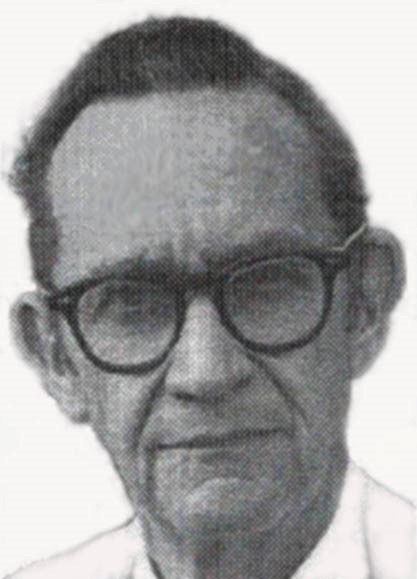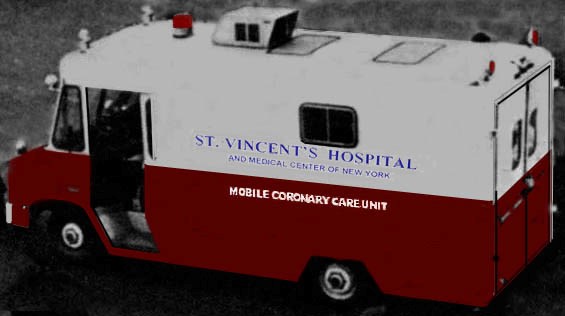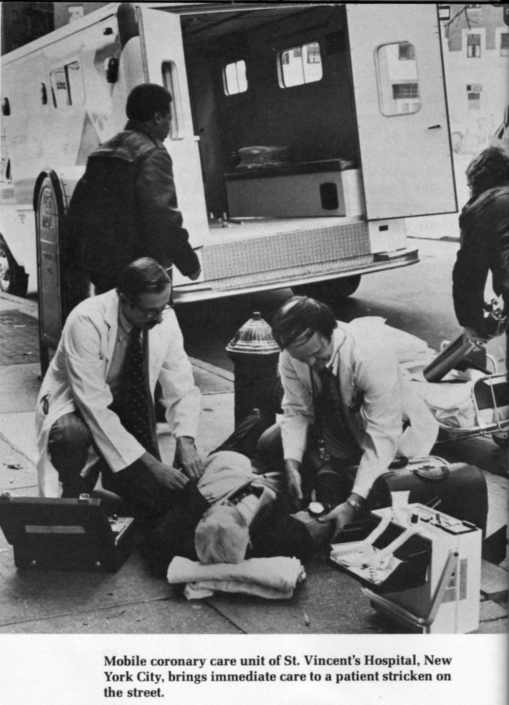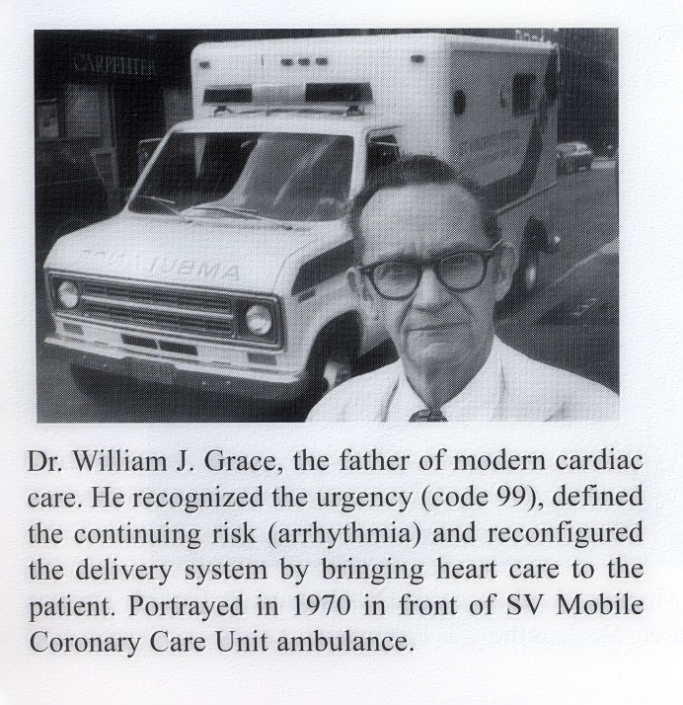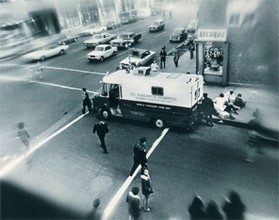Citation:
National EMS Museum People Files, NEMSM-0003 [Please include Folder/Person’s Name]
Dr. William Grace
The late William Grace, M.D., F.C.C.P is considered one of the great pioneers in modern cardiac care. In 1968, the St. Vincent’s Hospital and Medical Center of New York initiated the nation’s first mobile coronary care unit as a result of a preceding feasibility study which had been funded by a grant from the Federal Regional Medical Program (RMP). In the previous year, the United States Public Health Service had estimated that there were approximately a half-million acute myocardial infarction deaths in the United States annually. It was also reported that at least 50% to 75% of these patients died before receiving medical attention at a hospital. Recently established Coronary Care Units within hospitals had already resulted in a substantial reduction in cardiac patient death rates through the early detection and control of life- threatening arrhythmias.
Dr. Grace, Director of Medicine and a chest surgeon at St. Vincent’s, along with his associate John A. Chadbourn, M.D. concluded that it was likely that if one could reach the patient sooner, more patient lives could be saved by controlling the life-threatening arrhythmias which killed most of the patients. The concept of moving the coronary care unit outside the hospital to the patient’s side had been first demonstrated by Dr. Frank Pantridge and Dr. John Geddes of the Royal Belfast Hospital in Northern Ireland in 1967.
St. Vincent’s first Mobile Coronary Care Unit (MCCU) was configured on a white over red 1968 Chevrolet Step-Van, and it utilized a portable battery powered defibrillator-monitor; a battery-powered electrocardiograph, I.V. kit, resuscitation and oxygen kit, and a drug kit. Personnel included a Red Cross Advanced First Aid trained driver and attendant, an attending physician, resident physician, emergency room nurse, ECG technician, and a student nurse observer. The Manhattan New York City Police dispatcher would usually receive “cardiac” calls from beat police officers or the public and alert the St. Vincent hospital operator via telephone. When a cardiac call came in, the on-duty team would be alerted through a personal belt pager and would only have four minutes to arrive in the in the emergency room, gather all equipment and go en-route to the call. The MCCU had a rotating red beacon and red front and rear flashing lights, but no siren and drove at normal speed to a call. The Saint Vincent MCCU response area was bordered by 34th Street to Canal Street and Fifth Avenue to the Hudson River and could often take as long as 15-25 minutes to travel to the most distant location within the St. Vincent ambulance district.
Upon arrival, the team obtained the patient’s vital signs, obtained a 12 lead electrocardiogram, started an IV, and administered required medications. The return to St. Vincent’s hospital was non-emergency and the patient was usually taken directly to the coronary care unit. In the early 1970s, the Chevrolet Step-Van was replaced with a Grumman Mark 1 modular ambulance vehicle and a LifePak II. The success of the Saint Vincent’s MCCU Project inspired the development of the “HeartMobile” in Columbus, Medic 1 in Seattle, as well as similar pioneer programs in Marietta, GA , Montgomery County, MD and Los Angeles in 1970. Dr. Grace passed away in 1974.

